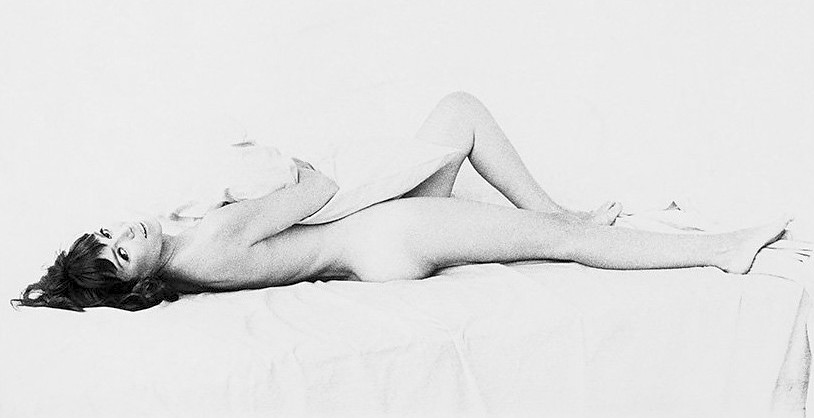
First published in 1966, Mirror Of Venus is a collection of erotic photographs from Wingate Paine’s first solo exhibition. To accompany the images are two sets of texts. These texts take the form of poetic musings; one by filmmaker Federico Fellini and the other by novelist and screenwriter Françoise Sagan. Both Sagan and Fellini were cultural iconoclasts whose work had been the cutting edge of the fifties and early sixties.
Sagan takes a more abstract view of Paine’s photographs, creating captions that are more inspired by the image rather than literal reactions to them. Sagan projects some Anaïs Nin inspired philosphy into her erotic texts without any of the political agency of the sixties’ sexual revolution. Sagan grasps for themes of female identity and community with which to imbue the images but seems stifled by the inherent eroticism of Paine’s work.
Fellini’s text (which is the bold text in the book) does even less. Fellini’s relationship to the photographs is literal and he comes across as little more than a horny old man. Fellini consistently compares the female form to inanimate objects, betraying his own my misogyny as well as his general detachment from the times. Fellini’s meager contribution to Mirror Of Venus predicts the rampant commodification and literal objectification of the female form in his films from the seventies. Like his Casanova, Fellini’s sexual ideal is the immortal wind-up doll.
The ability of Mirror Of Venus to shock, titillate or enrapture has wained over the years. By the standards of the twenty-first century Wingate Paine’s portraits of Scarlet, Sandra and Carla are quaint. Likewise Fellini’s “thoughts” are like something preserved in a private time capsule while Sagan’s text is little more than a cultural curio.
